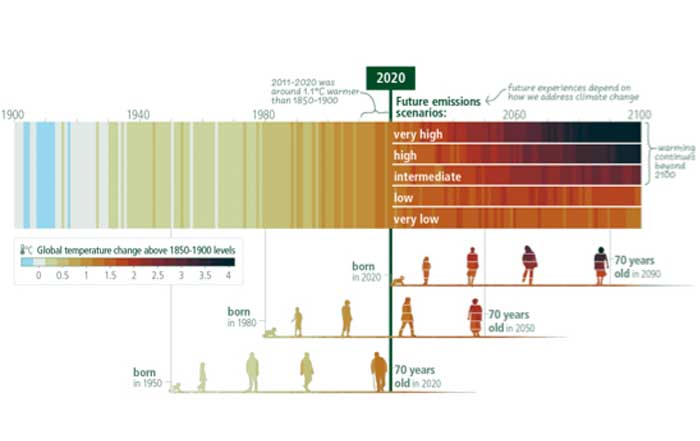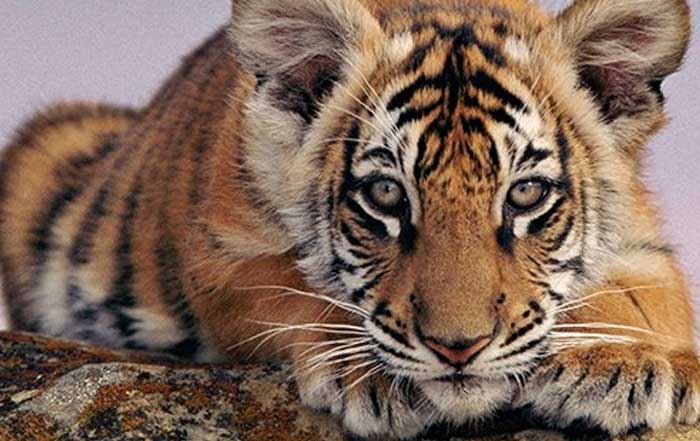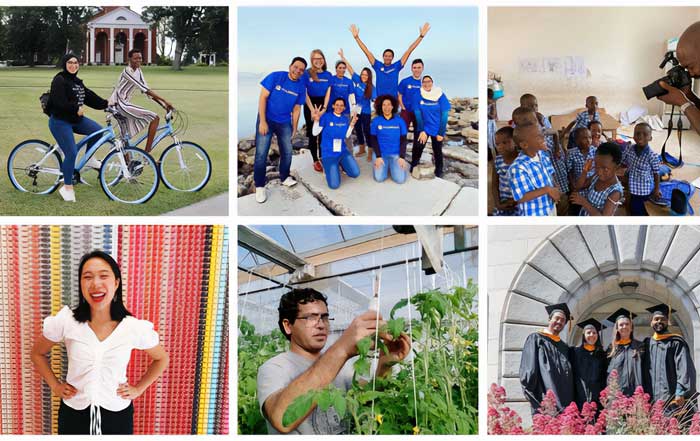As the world moves deeper into the 21st century, sustainability has transcended its early associations with environmental activism and entered the core of global business strategy and community engagement. The collaboration between large corporations and grassroots movements has become one of the most powerful forces shaping sustainable transformation. This synergy, built on shared goals of environmental responsibility and social equity, now defines how modern societies pursue progress without compromising the planet’s future.
For WorldsDoor.com, this subject carries profound relevance because it bridges the gap between international business innovation, local community empowerment, and the pursuit of a more balanced world. The narrative of sustainability today is no longer confined to boardrooms or environmental summits; it lives in the daily practices of ordinary people who recycle, plant trees, or support ethical brands — and in corporations that realign their strategies to reduce emissions, source ethically, and invest in renewable technologies.
The Evolution of Sustainability in the Global Economy
Over the past two decades, sustainability has evolved from a niche discussion into an economic imperative. Global institutions such as the United Nations, through its Sustainable Development Goals (SDGs), have created a shared framework for governments and corporations alike. Simultaneously, the private sector has recognized that environmental and social governance (ESG) principles are no longer optional but essential for long-term viability.
Major companies like Unilever, Microsoft, IKEA have demonstrated that sustainable business can be profitable and socially beneficial. Unilever’s Sustainable Living Plan has guided the company to reduce environmental impact while expanding consumer loyalty. Microsoft’s commitment to becoming carbon negative by 2030 represents a model for how technological giants can drive systemic change. Patagonia, often regarded as a moral compass for the apparel industry, continuously proves that transparency and ethical production can coexist with commercial success.
Learn more about sustainable business practices on WorldsDoor Business.
The Role of Local Communities in Driving Change
While corporations create large-scale frameworks for action, local communities are redefining sustainability from the ground up. Across Africa, Asia, Europe, and the Americas, small collectives and community-based organizations are implementing localized climate solutions that reflect cultural and geographic realities.
In India, rural cooperatives are developing solar microgrids to provide power for remote villages, while in Kenya, community-led initiatives like the Green Belt Movement, founded by Wangari Maathai, continue to inspire global reforestation and female empowerment. Scandinavian countries, long admired for their environmental leadership, are witnessing new grassroots urban farming movements that reconnect citizens with food sources and biodiversity.
For readers interested in exploring global lifestyle and cultural sustainability, visit WorldsDoor Culture and WorldsDoor Lifestyle.
Corporate Accountability and the ESG Imperative
The integration of Environmental, Social, and Governance (ESG) metrics into business reporting has transformed how corporations measure and communicate their responsibility. Investors now view sustainability not merely as an ethical choice but as a performance indicator. According to the World Economic Forum, trillions of dollars in managed assets now include ESG criteria, signaling a structural shift in financial markets.
Yet, despite progress, challenges remain. Greenwashing — the act of falsely promoting sustainability — continues to threaten credibility. Regulators in the European Union and United States are tightening rules to ensure transparency, demanding verifiable climate disclosures and supply chain traceability. The Task Force on Climate-related Financial Disclosures (TCFD) and the emerging International Sustainability Standards Board (ISSB) are working to create global frameworks that unify reporting standards and restore investor trust.
Readers seeking insight into technology’s role in sustainability can learn more on WorldsDoor Technology.
The Digital Transformation of Sustainability
Digitalization has become a cornerstone of global sustainability efforts. Artificial intelligence, blockchain, and the Internet of Things (IoT) are revolutionizing how environmental data is collected, analyzed, and acted upon. AI systems now optimize energy consumption in smart cities, predict crop yields for sustainable agriculture, and model carbon sequestration patterns in reforestation projects.
Blockchain, once associated mainly with cryptocurrency, now enables transparent supply chains where every transaction — from raw material sourcing to final sale — is verifiable. This ensures accountability and fairness, particularly for producers in developing economies. Platforms like IBM’s Food Trust and Everledger demonstrate how technology can bridge the gap between ethical sourcing and consumer trust.
To understand how digital technologies continue to shape the future, visit WorldsDoor Innovation.
The Intersection of Health, Environment, and Society
Sustainability cannot be separated from human health and social well-being. Environmental degradation directly impacts air quality, nutrition, and mental health, creating systemic challenges that demand collective solutions. The World Health Organization (WHO) estimates that nearly 25% of global deaths are linked to environmental factors such as pollution, poor sanitation, and exposure to hazardous chemicals.
Communities and corporations are beginning to collaborate on holistic sustainability models that integrate environmental and social care. Corporate wellness programs now include environmental volunteering, while local health organizations adopt green policies to reduce waste and energy use. The pandemic years accelerated awareness of this interconnectedness, pushing cities worldwide to redesign urban spaces with more greenery, cycling infrastructure, and sustainable housing.
Explore more about environmental and health interconnections on WorldsDoor Health and WorldsDoor Environment.
Global Sustainability Quiz
Test your knowledge on corporate and community sustainability
Case Studies in Corporate and Community Collaboration
One of the most compelling aspects of this global movement is the increasing collaboration between corporations and grassroots initiatives. In the Philippines, partnerships between Coca-Cola Foundation and local NGOs are restoring mangroves and supporting fishermen’s livelihoods. In the United States, Tesla’s engagement with local communities in Nevada and Texas highlights how corporate innovation can coexist with local economic revitalization through renewable energy investments and employment opportunities.
In Europe, IKEA has launched its “Better Living” program to encourage sustainable consumption through circular design and take-back systems, allowing customers to recycle furniture rather than discard it. Meanwhile, community energy cooperatives in Germany and Denmark are democratizing renewable energy production, enabling residents to co-own solar and wind projects.
These cases exemplify a broader shift — the decentralization of sustainability — where the world no longer relies solely on governments or corporations but embraces a shared sense of stewardship between institutions and individuals.
The Education of a Sustainable Generation
Education plays a crucial role in nurturing sustainability consciousness. Schools and universities across the world are integrating sustainability into curricula, from primary education to postgraduate research. Institutions such as Stanford University, University of Cambridge, and National University of Singapore are leading in interdisciplinary programs that blend technology, social science, and environmental policy.
Beyond formal education, digital platforms and social media campaigns empower citizens with knowledge and tools for sustainable living. Initiatives like Earth School, created in partnership with TED-Ed and UN Environment Programme, provide free educational content on climate and conservation topics to millions of learners.
Learn more about how global education supports sustainability through WorldsDoor Education.
Cultural Transformation and the Rise of Sustainable Lifestyles
Sustainability today is as much a cultural transformation as it is an environmental or economic one. Around the world, people are re-evaluating their consumption habits, food choices, travel behaviors, and even aesthetic preferences through the lens of sustainability. What once appeared as niche eco-conscious living is now an aspirational lifestyle that defines modern identity in urban and rural communities alike.
The global fashion and food industries illustrate this cultural evolution vividly. Ethical fashion labels such as Stella McCartney, Allbirds, and Reformation have reshaped the industry by using sustainable materials, circular production models, and transparency-driven marketing. Simultaneously, a growing number of consumers have turned to plant-based diets, motivated not only by health but by concern for climate change and animal welfare. Global organizations like The Good Food Institute and Beyond Meat continue to expand the reach of alternative proteins, reshaping the food supply chain and reducing pressure on land and water resources.
For more about how sustainable culture influences global lifestyles, visit WorldsDoor Lifestyle and WorldsDoor Food.
Green Finance and the Economic Backbone of Sustainability
A crucial enabler of this global shift is green finance, which channels investment into environmentally responsible projects. Financial institutions such as Goldman Sachs, HSBC, and Deutsche Bank have adopted green bonds, ESG funds, and climate-aligned portfolios to finance renewable energy, waste management, and conservation projects. The Global Green Finance Index (GGFI) highlights how financial hubs like London, Zurich, and Singapore are emerging as key centers for sustainable capital flows.
Public policy also plays a role in accelerating this trend. The European Green Deal, for example, commits the European Union to achieving climate neutrality by 2050 through major investments in clean energy and circular economy models. Meanwhile, the Securities and Exchange Commission (SEC) in the United States has increased scrutiny of ESG disclosures to ensure that corporate sustainability claims are backed by measurable outcomes.
Emerging economies, particularly in Asia and Africa, are leveraging green finance to leapfrog into the sustainable era. Countries such as Kenya, Indonesia, and Vietnam are witnessing a surge in renewable energy projects funded through green bonds and public-private partnerships. This democratization of sustainable finance ensures that environmental responsibility is not limited to wealthy nations but becomes a global economic norm.
Readers can explore related global developments on WorldsDoor Business and WorldsDoor Sustainable.
Sustainable Tourism and the Reinvention of Travel
The tourism industry, one of the world’s largest employers, has undergone a radical transformation following the global disruptions of the early 2020s. With travelers more aware of their ecological footprint, destinations and travel companies have redefined tourism through sustainability principles. Organizations such as UNESCO and Global Sustainable Tourism Council (GSTC) have introduced frameworks for preserving cultural heritage, protecting biodiversity, and promoting community-based tourism.
Countries like Costa Rica, Bhutan, and New Zealand are celebrated examples of how sustainability and tourism can coexist. Costa Rica’s focus on eco-lodges and renewable energy has made it a model of conservation-driven tourism. Bhutan’s “Gross National Happiness” approach prioritizes environmental integrity over mass tourism, while New Zealand’s Tiaki Promise encourages visitors to act as guardians of nature and culture.
In Europe, cities such as Amsterdam and Copenhagen have restructured their tourism strategies to manage overtourism and encourage off-season travel. Digital innovation supports this transition, with carbon-tracking apps and sustainable itinerary platforms enabling travelers to make informed choices about accommodation, transport, and dining.
For in-depth stories about global tourism and its sustainable reinvention, visit WorldsDoor Travel.
Innovation Ecosystems Fueling Global Sustainability
Across continents, innovation hubs are driving the next frontier of sustainability through cross-sector collaboration. Startups, universities, and governments are forming dynamic ecosystems where technology accelerates environmental solutions. In Silicon Valley, companies like Tesla, Google, and Apple continue to lead renewable energy adoption and sustainable product design. In Europe, green tech clusters in Berlin, Stockholm, and Zurich are developing clean technologies that enhance resource efficiency and reduce emissions.
Asia, too, has become a center of innovation-led sustainability. South Korea’s “Green New Deal,” Japan’s hydrogen energy initiatives, and Singapore’s Smart Nation strategy collectively illustrate how governments integrate digital transformation with environmental responsibility. Africa’s innovation landscape, particularly in Kenya and Nigeria, is proving that sustainability can be an engine of inclusive growth, where solar microgrids and digital payments systems empower underserved populations.
These innovation ecosystems thrive on collaboration. International organizations like the World Bank, International Energy Agency (IEA), and OECD have emphasized the importance of research funding and cross-border technology transfer to accelerate sustainable transformation. Partnerships between startups and multinational corporations have yielded breakthrough products — from biodegradable packaging materials to AI-driven water management systems.
Learn more about how innovation shapes sustainability on WorldsDoor Innovation.
The Power of Collaboration and Ethical Leadership
The convergence of corporate responsibility and grassroots activism depends on leadership — not only from CEOs or policymakers but from citizens who embrace ethical values. The rise of B Corporations, certified by B Lab, signifies this shift. These companies voluntarily adhere to high standards of social and environmental performance, transparency, and accountability. Notable examples include Ben & Jerry’s, Eileen Fisher, and Seventh Generation, which combine profit with purpose.
At the grassroots level, community leaders are driving campaigns that transform local economies. Urban gardeners, social entrepreneurs, and local activists are not only influencing municipal policies but are also redefining what leadership means in a sustainable world. Ethical decision-making is now integral to reputation management, and companies found lacking in accountability face backlash from both consumers and investors.
The ethical dimension of sustainability also extends to data transparency, labor rights, and inclusivity. In the digital economy, organizations must ensure that technological progress does not widen inequality. The ethical use of artificial intelligence, equitable access to green technologies, and fair representation in environmental policymaking are now central to achieving sustainability goals.
Readers interested in exploring these ethical intersections can visit WorldsDoor Ethics.
Global Case Studies in Corporate–Community Synergy
Europe’s Circular Economy Revolution
Europe remains a global pioneer in integrating circular economy principles. Companies such as Philips and H&M Group are redesigning products for reuse and recycling, while municipalities across the continent adopt waste-to-energy systems. The European Circular Economy Action Plan reinforces the continent’s goal of resource efficiency, promoting new materials science and eco-design. In the Netherlands, Amsterdam’s city government collaborates with startups to achieve full circularity by 2050, reducing dependence on raw materials while stimulating innovation.
Asia’s Green Urban Development
Asian megacities, often associated with rapid industrialization, are now at the forefront of sustainable urban planning. Singapore’s “City in Nature” vision integrates biodiversity into urban infrastructure, while Tokyo and Seoul have implemented zero-emission mobility systems and smart waste management technologies. In Thailand, community-driven river cleanups and coastal preservation initiatives have become national movements supported by both local businesses and international NGOs.
North America’s Renewable Transition
In the United States and Canada, renewable energy has evolved from a niche initiative to a mainstream economic driver. States like California and Texas now generate a significant share of their electricity from solar and wind power. In Canada, indigenous communities have become partners in renewable energy cooperatives, ensuring that green projects benefit local populations economically and culturally. Corporate giants such as Amazon and Google have signed record-breaking renewable energy purchase agreements to achieve carbon neutrality.
Africa’s Community Empowerment Model
Across Africa, sustainability initiatives often begin at the community level. Projects like Solar Sister empower women entrepreneurs to distribute solar lighting and clean cookstoves, improving both health and livelihoods. In South Africa, the GreenCape initiative promotes sustainable industries, while Rwanda’s ban on plastic bags and investment in eco-tourism demonstrate how policy can align with community action.
Explore more regional sustainability stories on WorldsDoor World.
Future Challenges on the Road to Global Sustainability
Despite remarkable progress, the road to global sustainability remains fraught with complex challenges that test the resilience of both corporations and communities. Climate change continues to intensify, biodiversity loss accelerates, and social inequality widens even within green economies. These realities highlight the need for continued collaboration, transparency, and innovation to maintain momentum in sustainability efforts.
One of the greatest challenges lies in reconciling economic growth with environmental stewardship. The global economy, still largely dependent on fossil fuels, struggles to transition toward a fully renewable model fast enough to meet the targets set by the Paris Agreement. While renewable energy costs have plummeted, storage infrastructure and global logistics remain bottlenecks. Moreover, geopolitical tensions and supply chain disruptions have slowed progress in critical sectors such as electric vehicle production and semiconductor manufacturing for clean technologies.
Another emerging issue is the “green divide” between developed and developing nations. Wealthier countries have greater access to green technologies, investment capital, and advanced infrastructure, whereas low-income nations face difficulties securing sustainable financing. The United Nations Development Programme (UNDP) has emphasized the importance of inclusive climate action, ensuring that developing regions receive fair access to funding, education, and technology transfers. Without equitable solutions, global sustainability risks becoming an uneven pursuit — where some nations advance while others fall behind.
The Intergovernmental Panel on Climate Change (IPCC) warns that without systemic change, global temperatures could surpass critical thresholds within decades. For this reason, sustainable transformation is not optional; it is existential. To achieve it, societies must integrate environmental priorities into every sector — from agriculture and transportation to finance and education. Learn more about current environmental issues and global initiatives on WorldsDoor Environment.
The Role of Public Policy and Global Frameworks
Governments continue to play a pivotal role in shaping the global sustainability agenda. Policy frameworks and regulatory systems determine how businesses and citizens align with long-term climate goals. Over the past few years, landmark policy initiatives have emerged across continents, redefining global cooperation.
In the European Union, the Fit for 55 package aims to reduce greenhouse gas emissions by 55% by 2030 through carbon pricing, stricter vehicle emission standards, and renewable energy incentives. In the United States, the Inflation Reduction Act (IRA) has catalyzed an unprecedented wave of green investment, directing billions toward clean manufacturing, electric vehicles, and community-based renewable projects. Meanwhile, in China, the government’s 14th Five-Year Plan emphasizes energy efficiency, circular economy adoption, and carbon neutrality by 2060.
These initiatives are not isolated; they form part of a growing global consensus that sustainability must be embedded into public governance. However, effective implementation requires collaboration between policymakers, private enterprises, and civil society. The intersection of government and grassroots action ensures that policies are not only drafted but actively supported by those they aim to serve.
International cooperation has also gained renewed urgency. The COP28 summit reinforced global partnerships by promoting adaptation funds, loss and damage mechanisms, and technology transfer commitments. Such collaborative platforms encourage accountability while empowering nations to act collectively rather than competitively. This unity forms the backbone of sustainable governance in an increasingly fragmented world.
The Circular Economy and the Redefinition of Consumption
One of the most transformative concepts in modern sustainability is the circular economy — an economic system that minimizes waste and maximizes resource efficiency by reusing, repairing, and recycling products. This model challenges the traditional linear “take-make-dispose” approach that has dominated industrial economies since the 20th century.
Corporations are rethinking design processes to extend product life cycles. Electronics companies like Dell and HP have launched take-back programs to recycle components, while fashion brands are adopting textile recovery systems. In construction, firms are experimenting with sustainable materials such as hempcrete and mycelium-based composites to reduce carbon emissions.
At the community level, circular economy principles are being embraced through repair cafés, swap markets, and local recycling networks. These small-scale actions are vital in creating behavioral change and reducing dependence on resource-intensive production. Cities such as Helsinki, Amsterdam, and Melbourne are becoming laboratories for circular policy, integrating design, logistics, and business models that keep resources circulating longer.
For a deeper exploration of lifestyle changes and consumer transformation, readers can visit WorldsDoor Lifestyle.
The Future of Green Technology and AI Integration
Technology will continue to define the next phase of sustainability, bridging the gap between human ambition and ecological necessity. Artificial intelligence, robotics, and data analytics are revolutionizing how humanity understands and manages environmental systems. AI algorithms now optimize energy grids, detect illegal deforestation via satellite imagery, and model the effects of climate change on water resources and agriculture.
In manufacturing, Industry 4.0 and smart automation reduce waste by optimizing production efficiency. Renewable energy technologies — particularly solar, wind, and hydrogen — are becoming more intelligent, adaptable, and affordable. Tesla’s advances in battery technology and Siemens’ development of industrial automation tools show how corporations can combine profit with environmental innovation.
Moreover, the rise of digital twins — virtual replicas of physical systems — allows companies and cities to simulate environmental impacts before making real-world changes. This predictive capacity ensures better planning and minimizes costly errors in infrastructure, urban design, and energy management.
Learn more about how technology and sustainability intersect on WorldsDoor Technology.
Cultural Diplomacy and the Global Sustainability Narrative
Cultural exchange and international collaboration have become essential tools in advancing sustainability. Through art, media, education, and diplomacy, nations are sharing ideas that transcend political boundaries and foster a sense of global belonging. The rise of “eco-diplomacy” — where cultural and environmental priorities merge — demonstrates that sustainability is not just a policy issue but a human one.
The UNESCO Creative Cities Network is a leading example, connecting cities around the world through sustainable art, gastronomy, and design. This initiative highlights how culture can shape environmental consciousness and strengthen community resilience. Similarly, environmental film festivals and digital storytelling platforms amplify grassroots narratives, giving visibility to voices often excluded from mainstream discourse.
Youth movements, such as those led by Greta Thunberg and countless regional activists, have reshaped the conversation by demanding accountability and intergenerational justice. These movements illustrate that sustainability is not a trend but a defining cultural ethos that will shape the rest of the 21st century.
To discover how global culture influences sustainability, visit WorldsDoor Culture.
The Next Generation of Corporate–Community Partnerships
Looking ahead, corporate-community synergy will likely evolve from philanthropic support to co-creation. Companies will not only fund community initiatives but actively involve citizens in decision-making processes. This participatory model ensures that sustainability strategies align with local realities while benefiting from global expertise.
One emerging approach is “shared value creation,” where businesses design products and services that solve social and environmental problems while maintaining profitability. For example, Nestlé’s regenerative agriculture projects collaborate with local farmers to enhance soil health and water efficiency. Similarly, Adidas’ partnership with Parley for the Oceans converts marine plastic waste into high-performance sportswear, merging environmental action with innovation.
Corporate-community synergy also extends to education and workforce development. Green jobs are expanding across industries — from renewable energy technicians to sustainability data analysts — creating new pathways for equitable economic growth. Governments and corporations are increasingly investing in vocational training programs that prepare workers for a sustainable economy.
Readers can explore related business transformation themes on WorldsDoor Business.
A Vision for a Sustainable Future
The story of sustainability is ultimately one of collective evolution. From multinational corporations adopting green strategies to grassroots communities leading reforestation and waste reduction, humanity is gradually aligning around a shared understanding: the planet’s health is inseparable from our own.
By 2030, the global sustainability landscape is expected to look vastly different. Renewable energy could power the majority of urban centers, circular economy systems could redefine how goods are produced and consumed, and biodiversity restoration could begin to reverse decades of ecological decline. These outcomes depend on persistence, transparency, and collaboration across every level of society.
For WorldsDoor.com, this future embodies the very essence of interconnectedness — a world where culture, business, technology, and ethics converge to form a sustainable civilization. The synergy between corporate innovation and grassroots resilience represents more than just environmental awareness; it is the blueprint for a balanced and compassionate world.
As societies move toward that vision, the question is no longer whether sustainability is achievable, but how swiftly humanity can unite to make it universal. The partnership between global corporations and local communities, once seen as improbable, is now the cornerstone of our planet’s collective destiny — one where every decision, from boardroom to village, shapes the shared future of Earth.
To stay engaged with global sustainability insights, visit WorldsDoor Sustainable and WorldsDoor World.










